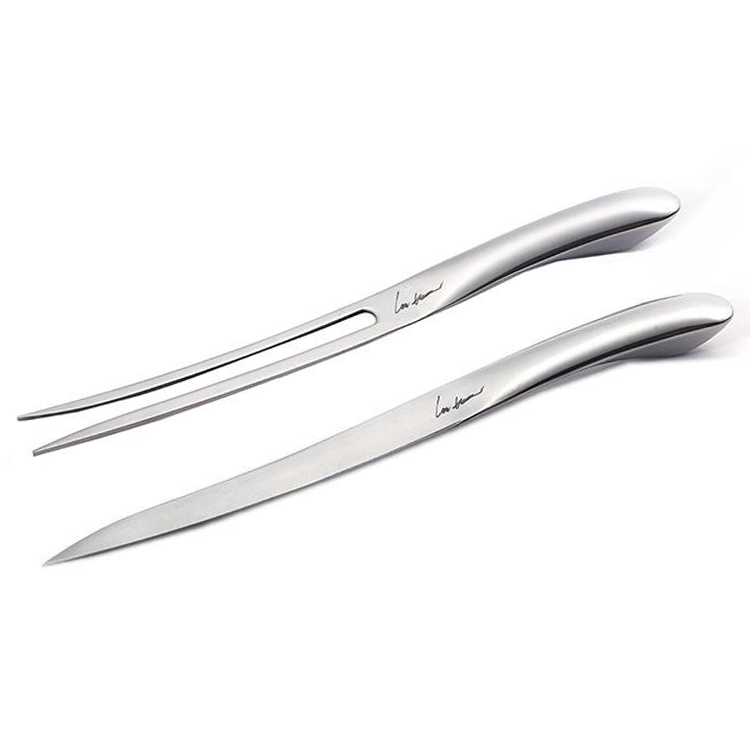Views: 280 Author: Site Editor Publish Time: 2025-09-15 Origin: Site











Content Menu
● Understanding Your Carving Knife Set
>> Importance of Regular Sharpening
>> Step-by-Step Sharpening Process
>>> 2. Setting the Sharpening Angle
>>> 5. Stropping
>> Cleaning and Conditioning Wooden Handles
>> Using the Right Cutting Surface
>> When to Seek Professional Maintenance
Carving knives come in a variety of shapes and sizes, each suited for specific tasks. Understanding the distinct types helps in both maintenance and optimal usage:
- Straight Blades are versatile and used for controlled slicing and cutting.
- Curved Blades help with hollowing and shaping curved surfaces such as bowls or spoons.
- Detail Knives have pointed tips for intricate work.
- Hook Knives enable you to carve concave shapes effectively.
Selecting the right knife type for your project reduces wear and improves results.
*[Suggested image: Various carving knife blade shapes]*
Blade materials often include high-carbon steel for sharpness and durability or stainless steel for corrosion resistance. Handles can be wood, synthetic, or composite, influencing grip and maintenance requirements.
Wooden Handles need regular conditioning to prevent drying and cracking, while synthetic handles generally require less upkeep but should still be cleaned and inspected for damage.
Removing debris, dust, and moisture after each use is fundamental to prolonging your carving knives' life.
- Use warm water and mild soap; avoid harsh chemicals.
- Wipe the blade and handle with a soft cloth.
- For stuck-on residue, use a soft-bristled brush carefully.
Always dry knives thoroughly to avoid rust, especially with carbon steel blades. Applying a light coat of mineral oil or food-safe honing oil to the blade can prevent corrosion.
Dishwashers expose knives to aggressive heat and chemicals, which dull blades and damage handles. Always handwash your carving knives.
A sharp edge reduces carving effort and enhances precision. Neglecting sharpening leads to a dull blade that can cause accidents or uneven cuts.
- Water or oil stones of varying grit (from coarse to fine)
- Leather strop with honing compound
- Sharpening guides or angle jigs (optional)
Soak water stones for 5-10 minutes before use or apply honing oil to oil stones.
Maintain a consistent edge angle between 15 to 20 degrees, depending on the knife and manufacturer's recommendations.
Use long, smooth strokes from base to tip. Apply equal pressure on both sides of the blade to keep the edge symmetrical.
Start with a coarse stone to restore the edge, then progress to finer stones for honing and polishing.
Finish by stropping on a leather strap charged with honing compound. This aligns and polishes the edge for razor-sharpness.
- Wipe handles clean of debris.
- Apply wood conditioners or mineral oil to prevent drying.
- Sand lightly and re-varnish if the finish deteriorates or cracks appear.
Small cracks can be repaired with wood glue and clamping until dry. Larger damage may require professional attention.
Protect blades and users by storing carving knives properly:
- Use specialized wooden blocks with knife slots.
- Magnetic knife strips keep blades accessible and protected.
- Knife rolls or sheaths safeguard blades for transport and storage.
Avoid loose storage in drawers to prevent blade damage and accidents.
Use wooden or high-density plastic cutting boards. Avoid glass or stone, which dull blades faster.
- Always hold knives with a firm grip.
- Carve away from your body.
- Wear protective gloves if needed.
If knives develop chips, severe dulling, or handle damage, consult a specialist for repair or professional sharpening.

Q1: How often should I sharpen my carving knives?
Sharpen lightly after every few uses and do a full sharpening each time the blade begins to dull noticeably.
Q2: Can I use any oil for protecting my knives?
Use food-safe oils like mineral oil or specialized honing oils; avoid cooking oils that can become rancid.
Q3: How do I maintain a wooden handle?
Regular cleaning and applying wood conditioner or mineral oil prevent cracking and wear.
Q4: Is storing knives in a drawer safe?
No, storing knives loosely can damage edges and pose safety risks. Use blocks, strips, or sheaths instead.
Q5: Can I sharpen knives with a mechanical sharpener?
Mechanical sharpeners can harm thin carving edges. Manual stones and stropping provide safer, cleaner results.
This detailed guide equips knife users with expert advice, from blade care to storage, ensuring their carving knives remain sharp, safe, and effective for years. It includes rich visuals and video resources for immersive learning.Maintaining Your Carving Knife Set: A Complete Guide
Carving knives are invaluable tools for chefs, woodworkers, and artisans who demand precision, sharpness, and reliability. Proper maintenance of a carving knife set is essential to ensure that the knives stay sharp, durable, and safe to use over many years. This comprehensive guide covers all aspects of carving knife maintenance—from cleaning and sharpening to handle care and safe storage—backed by practical advice, step-by-step instructions, rich imagery, and video tutorials. Whether carving meat, wood, or other materials, following these guidelines will maximize the performance and lifespan of every knife in your set.